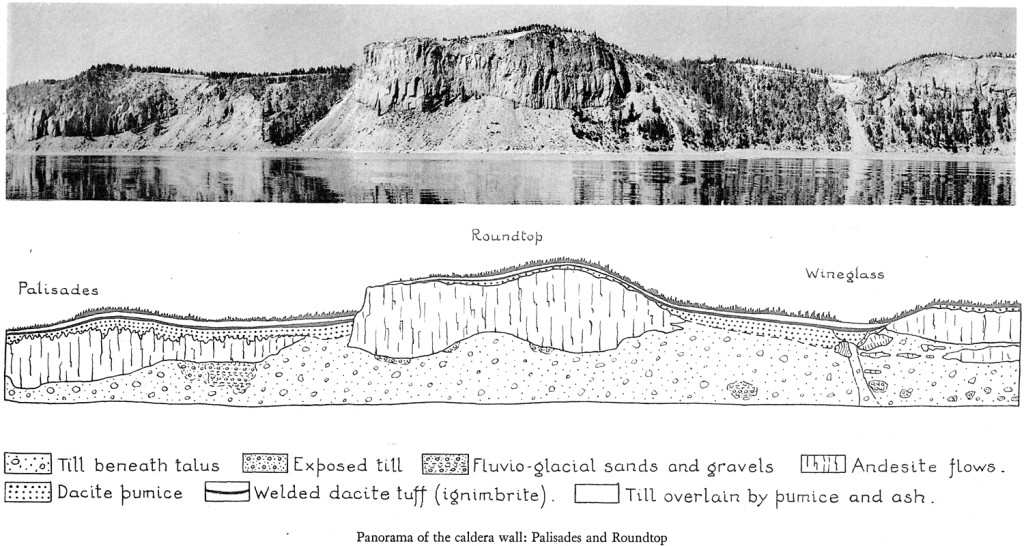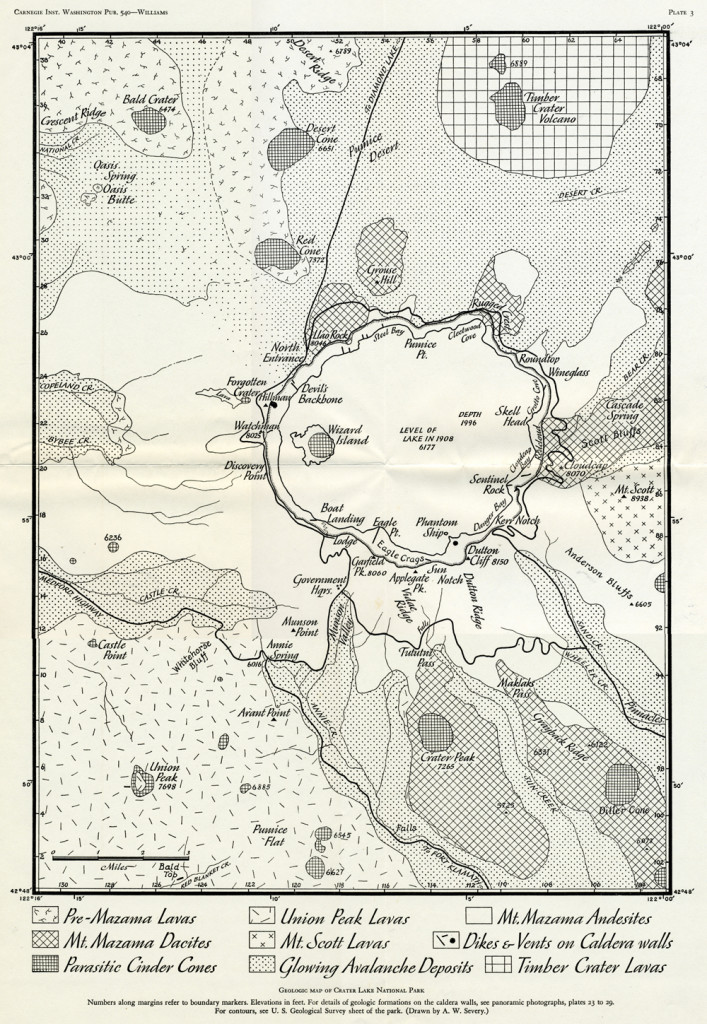Plate 25. Panorama of the caldera wall: Palisades and Roundtop
Immediately to the west of the Roundtop Bow is another thick sheet of andesite, forming Palisade Point. This also rests on glacial moraines (see panorama, plate 25). But the top, unlike the top of the Roundtop flow, is extremely irregular, bristling with monolithic crags and traversed by deep, steep-sided fissures, like those which characterize the tops of the later dacite flows. In the upper part of the Palisade flow, the jointing is closely spaced and curved, though generally almost vertical; lower down, the vertical joints are farther apart and produce the crude columnar structure which gives the flow its name. At the base, the lava becomes black, glassy, and autobrecciated. In this flow, ovoid inclusions up to a foot in length make up approximately 5 per cent of the bulk.
Plate 3.
Other young, thick andesite flows form the topmost cliffs of the caldera wall overlooking Grotto Cove. These likewise rest on glacial deposits and dip outward at much lower angles than the thin andesites forming the “primary slopes” of Mount Mazama (panorama, plate 3). Probably they were erupted from fissures far below the summit of the volcano. The thick flow immediately south of the Wineglass certainly issued from a feeder at the Wineglass itself, for where the cup joins the stem of the glass, the arrangement of the columns shows that the lava rose through a steeply inclined conduit before spreading at the surface (plate 25). Still other thick andesitic lavas form the highest cliffs beneath the Watchman and on Sentinel Point.
The rise of Mount Mazama took place during the Pleistocene period, and as the volcano grew its flanks were mantled with glaciers. Accordingly, the lavas are interbedded in many places with glacial moraines and fluvioglacial sands, and elsewhere there are signs of strong glacial erosion between successive flows. Strangely enough, the flows that were erupted onto and under the glaciers show no peculiarities suggestive of rapid chilling. Moreover, there must have been recurrent mudflows on the sides of the volcano as the ice was melted by falls of ash and eruptions of lava, yet no deposits of such flows have been recognized on the walls of Crater Lake. They must have been swept to lower elevations and buried there by later ejecta.
***previous*** — ***next***



